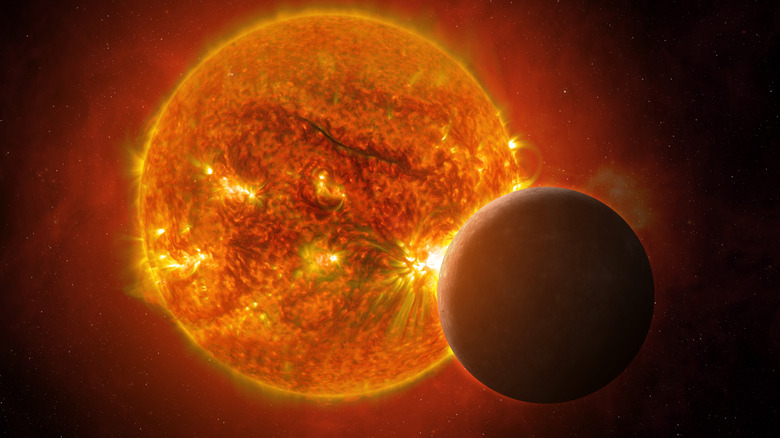Wait, What Is A Retroshade? The Astrological Concept, Explained
Mercury retrograde has become the most notorious of the planetary retrogrades in the zodiac realm, though it's known that other planets and systems also go into retrogrades from time to time in astrological contexts. It seems that, at any given time, planets are either in retrograde or in their typical resting energy. What is far less common — but which may possibly provide the literal and figurative link to understanding the natural transitions which occur before and after a retrograde — is the premise of retroshades, otherwise called retrograde shadows. In fact, the distinction between retrograde and the shadow from a retrograde can often be so subtle that the two are mistaken for being a comprehensive retrograde period in your chart.
A retroshade period can be described as a phase of stationing, where the station of the astrological movement is changed and adjusted to. The shadow from a retrograde in either direction, both as a planet is entering retrograde and then as the same entity exits retrograde, can be felt in our lives as a drastic, full round-about turn at times, while other times presenting as subtle changes that you must be attuned with to notice that a retrograde is fading into a retroshade. The full effects of a strong retrograde shadow can be explained in a person's life as feelings of energy, events, and changes in direction akin to a U-turn.
The length of a shadow period
The length of time a retrograde occurs can vary, as can the spatial relevance on your chart which has been attributed to the distance of various planets from the sun and our planet Earth. However, retrograde shadows tend to be consistent both entering and exiting a full retrograde, as each take effect over approximately two-week periods. Retroshade periods last an average of three weeks and as much as four weeks between the pre-retrograde and post-retrograde shadow periods.
Moreover, the length of the post-retrograde shadow coming out of a planetary retrograde period can be longer than its shadow period beforehand, especially if there's a lot of energetic and practical experience to catch up to speed as the planet exits retrograde. The periods of shadows before and after retrogrades can be compared to the dessert period, appetizer, or even palate cleansing courses served between entrées. In this case, the retrograde is the entrée.
Just like any other object that goes into motion, the sun and planets require a speed-up or slow-down period to return to their original placements. This is exactly what happens for the four weeks on either end of a retrograde. Many people equate the planetary effects during these retrograde shadows to miniature versions of full retrograde periods.
The retroshade refers to the slowing or quickening of energy
Returning to the basics, a retrograde period is when a planet or aspect of your birth chart, as well as within the greater astrological sphere, moves backward for a period of time. As Mercury can be a rather disruptive planet, to put it lightly, the backwards movement — otherwise referred to as opposite behavioral energy — can shift things in your life quite drastically. This is particularly true for those who have Mercury as an advisor or ruler in prominent areas of their astrological birth charts.
During any retroshade within your felt experience — or an upcoming shadow period that will present prior to the onset of a full retrograde — take this transition period as an opportunity to look inward, journal about current happenings in your life, and seek wisdom towards resolving conflict or knowing which aspects of your relationships can be resolved over time. Just as desserts and appetizers are delectable treats, think of retroshades as sweet times to transition your mind, consciousness, and awareness for the upcoming retrograde. If you're coming out of a retrograde, shadow periods are perfect opportunities to reflect upon your discoveries from the retrograde as well as any major changes that may have occurred in your life.


